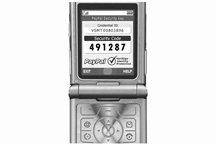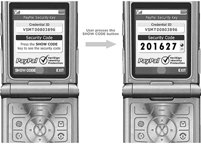VeriSign Identity Protection Mobile time-based UI designs and testing
In the summer of 2007, the User Experience design team worked on designs for the new time-based mobile VIP credential application. The time-based algorithm provides a new six-digit security code every 30 seconds. Len developed the UI designs and Shima performed user testing.
Len created five prototype applications in J2ME to test different UI designs. The first design was an event-based VIP mobile application that was used for comparison and required the user to press a button on a cell phone to receive a security code. The other four designs displayed security codes automatically every 30 seconds and did not require user intervention.




Usability testing results
Shima conducted two rounds of usability studies on the five designs.
The first study tested user preference for the designs with the bar indicator and the clock indicator (designs 3 and 4). The study was conducted on July 30, 2007 through August 1, 2007 with seven internal VeriSign employees. Most users preferred the clock indicator over the bar indicator.
Based on the results of the first study, a second study was conducted on August 22, 2007 through August 27, 2007 with 11 external participants. Design 3 was dropped, and the second study retested the other designs. Most participants preferred design 4, which generated the security code automatically and had a clock indicator to represent the remaining time. Number 4 was the design that was implemented.



 Back
Back